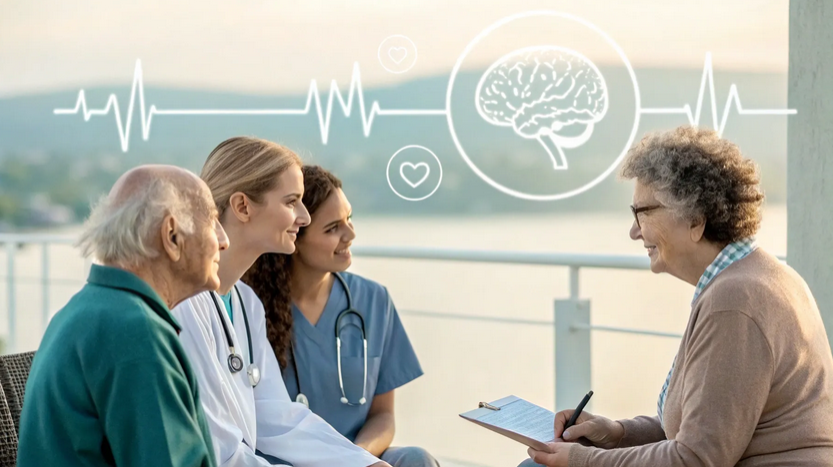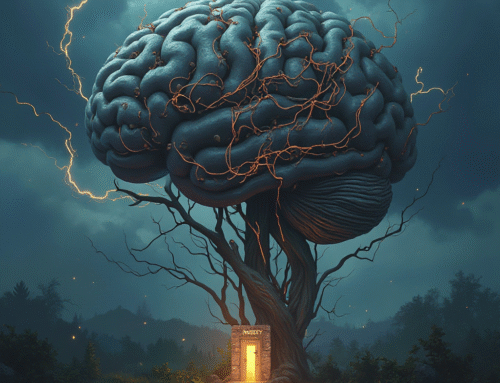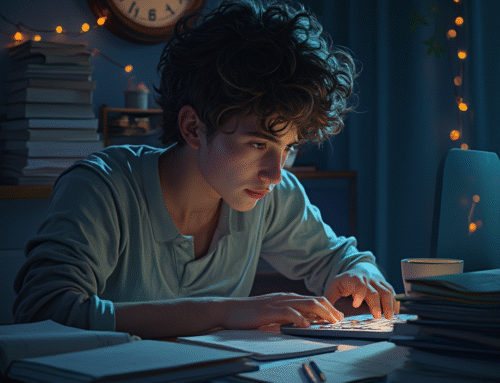How To Recognize Early Stroke Signs And Save A Life
How To Recognize Early Stroke Signs And Save A Life
How To Recognize Early Stroke Signs And Save A Life
Stroke continues as a global health emergency because this medical condition typically emerges swiftly and results in serious effects. Knowledge about identifying stroke symptoms together with proper response actions both saves lives and minimizes the damage caused by long term disabilities. This extensive guide explores every vital aspect of stroke pathology together with early symptomology and risk profiles and therapeutic choices for management and protective methods.
Stroke requires medical care very quickly because it remains an urgent medical situation. People feel fear coupled with anxiety whenever someone refers to a “stroke.” Knowledge about the subject transforms anxiety into preparedness to deal with stroke effectively. Knowledge about early stroke signs in combination with quick medical intervention enables people to minimize the harmful effects of stroke.
Table of Contents
- Step 1: Understanding What Stroke Is and Why It’s So Critical 🧠
- Step 2: Recognizing Stroke Symptoms Early with the BE FAST Method 🚨
- Step 3: How Quickly Do Stroke Symptoms Appear? ⏱️
- Step 4: Differentiating Stroke from Heart Attack ❤️
- Step 5: What to Do at Home If You Suspect Stroke 🏥
- Step 6: Understanding Stroke Treatment and the “Golden Hour” ⏳
- Step 7: Identifying Stroke Risk Factors and How to Manage Them ⚠️
- Step 8: The Role of Sleep and Lifestyle in Stroke Prevention 🌙
- Step 9: Stroke Rehabilitation and Recovery 🏃♂️
- Step 10: Preventing Recurrent Stroke – Secondary Prevention 🔄
- Frequently Asked Questions (FAQ) ❓
- Conclusion: Empower Yourself Against Stroke 💪
Understanding Stroke and Why It’s Serious Brain Work 🧠
A stroke happens when the blood supply to some part of the brain gets cut off, or reduced, taking away oxygen and food it needs, from brain tissue. This can be caused by a plug (ischemic stroke) or by a blowup of a blood pipeline causing bleeding in the brain (hemorrhagic stroke). When the brain cells start to die from lack of oxygen, it’s like the brain’s functions stop working and could lead to stiffness, speech troubles, or even passing away.
Did you know stroke hits fast, like a bolt? In a blink, someone who seemed okay may suddenly feel weak or tingly, have tricks talking, or can’t keep their balance.
In managing stroke, speed’s everything. Every ticking second’s important ’cause brain cells start dying quickly – like 32,000 cells each second during a big stroke. If you wait a minute, you can lose about 2 million brain cells, and every hour of delay makes things worse! How’s that for a race against time?
Spotting Stroke with BE FAST! 🚨
Finding stroke tells real fast is the first move to making its hit less bad. Dr. Jayanta Roy talks ’bout the BE FAST shortcut, a handy way to keep stroke signs in mind:
B – Balance: Sudden case of balance or having trouble. The person might feel light-headed or fall suddenly.
E – Eyes: Quick eye issues like seeing double, or loss of sight in one eye.
F – Face: Face droopy or not looking right. Maybe one side of the face hangs or is out-numb.
A – Arm: Hard or tingly arm. They might not be able to lift an arm or it drifts down.
S – Speech: Bad time talking, speech sounds funny, or can’t get speech.
T – Time: Time’s a big deal. If you see any of these, call the emergency folks straight away.
This easy-to-remember acronym helps folks quickly catch onto when a stroke might be going down, and gives off the hint there’s a hurry to get medical attention like now. Remember, “Time is Brain,” right? The faster the start to healing, the better the recovery chances are, right?
How Fast Do Stroke Signs Pop up? ⏱️
Stroke hints often come from nowhere, just like that. Unlike normal health problems that show up slowly, stroke comes without a hint. Out of nowhere, someone might feel weak on one side, or find talking hard while just sitting around or taking a stroll. This speed makes it really vital to act right away.
There’s often no long warning before strokes. But, sometimes small strokes called transient ischemic attacks (TIAs), or mini-strokes, might show up hours, days, or weeks before a real big stroke. TIAs comes with stroke-like signs that go away in minutes to hours. These short appearances aren’t lies and are big alerts that there’s a bigger stroke shadow coming. Why ignore?
Telling a Stroke Apart from a Heart Attack ❤️
Lots of us mix up stroke with heart attack, but they’re pretty different troubles. Both talk about blood block, but stroke hits the brain, and heart attack bugs the tick-tocker.
In heart whammy, blood supply to a heart part stops. It often comes with chest pain, and tough breathing and leaves you wondering: what are those signs pointing at? During stroke, the brain gets its blood flow broken up, showing itself as nerve faults like stiffness, problems speaking, or even seeing.
This lines the sand, ‘cause ways of fixin’ it aren’t the same. Like, they give aspirin during heart attacks at home on the way to the doc, but for a stroke? Giving aspirin, especially in bleeding stroke, could just make the bleeding worse. So for those thinking of popping meds at home suspecting stroke, maybe don’t. Your safest bet gets you to a place ready to care for stroke hiccups – right hospital needed..!
Step 5: What to Do at Home If You Think There’s a Stroke Happening 🏥
Okay, so, you think someone might be having a stroke? Here’s what to do, alright:
First thing, call emergency peeps super quick: Don’t wait. Getting to the hospital early is key!
Check vital signs, k? If ya can, try to check blood pressure and sugar level. Low sugar, ya know, can look like stroke.
Don’t give any meds: Like no aspirin or stuff without doc’s say-so.
Skip giving food or drink: Folks with stroke often can’t swallow too good, so choking’s a thing.
Make ’em comfy and safe: Help lie down with head a little high, if you can.
In rural places, actin’ fast is even more, well, important ‘cause hospitals might be far. Sometimes, the tele-health can help, though getting to a stroke-friendly place is still what you want to do – probably.
Step 6: Know Stroke Treatment and the “Golden Time” ⏳
Now about treatment — it’s come far, you know, but you gotta act fast for it work well. The first couple of hours after it starts, they call it “golden time” ‘cause special treatments can help.
Main treatments include:
Clot-buster meds: For stroke with clots, these drugs, when given soon, can dissolve clots.
Mech. thrombectomy: Sometimes they use catheter tools to take clots from big brain pipes.
But not all patients can have these. Only like 10-20% can. So, quick diagnosis and good care – helps everyone possibly, don’t you think?
Hospitals ready-for-stroke can do fast checks and stuff 24/7. Going there quick gives you more options, and might do a world of good?
Step 7: Spotting Stroke Risks and Managing Them ⚠️
Stopping stroke might mean handling those risk things. Some risks you can change, others, not so much.
Biggest Changeable Risks:
High Blood Pressure (Hypertension): You want to, you know, manage it with meds and lifestyle.
Smoking: Risks with the blood tubes and makes clots more likely.
Diabetes: High sugar can hurt those blood tubes more than you’d imagine.
These three are like a triple trouble mix. Change them with lifestyle tweaks and meds, could work, don’t you think?
Other Big Risky Stuff:
High cholesterol
Too much drinking
Not moving much
Being too heavy
Heart troubles like beats or valve issues
Family stroke or heart trouble talk
Bad sleep patterns
Eating good, moving regular, quitting smoke, less drink maybe, sleep well — it’s gonna, maybe, help?
Step 8: Sleep and Lifestyle for Stroke Prevention 🌙
Sleep! We forget it’s key yet! Studies say regular bed and wake times, plus enough good rest help balance things like hormones.
Bad sleep pattern throws stuff off and puts you in stroke-land more due to high blood pressure
Stress, late nights, junky foods, no move – all make young adults risky nowadays. And it sneaks early blood pressure and sugar levels, addin’ to stroke, maybe.
Step 9: Stroke Healing and Getting Better 🏃♂️
Recovering from stroke is about how bad the brain hit was and how quick treatment started. Sometimes starting treatment fast brings walking soon – within days, you know?
Rehabilitation is about helping people get better, recovering importantly requires:
To get back muscle and balance, folks might go to physical therapy.
For trouble talking, there’s speech therapy.
Doing everyday stuff again? That’s occupational therapy.
To work through feelings, many find psychological support helpful.
Sometimes folks get all the way well, other times they might have ongoing problems. Starting rehabilitation early, and keeping it up is really useful. Isn’t having family and community support just so helpful?
Step 10: Stopping Another Stroke – What can I do? 🔄
After someone has one stroke, they’re more at risk for another. So, the best plan is to figure out why it happened and take steps there to stop it from happening again.
This means:
Doctors look at what caused the first stroke.
Keep a close eye on blood pressure, sugar levels, and cholesterol.
If the doctor thinks it’s best, take medicine like blood thinners.
Change a few things like eating better, moving often, or quit smoking.
Keep checking with doctors to see if everything is going alright.
By looking after these things, the chance of another stroke gets a lot smaller!
Questions People Often Ask (QPOA) ❓
Q1: Can stroke show up slow?
Usually no, stroke signs pop up fast. Strokes need quick doctor help. Temporary small strokes, or TIAs, show that a bigger stroke might come later.
Q2: Is giving aspirin good if stroke is likely?
Nope, because it might make certain strokes worse. Best to get doctors help right away.
Q3: How quick should one get to the hospital if they have stroke is happening?
The faster, the better. Doctors can help more if the person arrives within 2-3 hours of noticing something’s wrong.
Q4: What life changes help cut stroke risk?
Control there pressure and blood sugar, don’t smoke, drink less booze, eat healthy, keep active, sleep well.
Q5: Can young people have strokes?
Yes! Young can’t avoid strokes, with bad habits like poor food choices, little exercise, or strange sleeping patterns.
Q6: What’s the primary vs secondary stroke prevention about?
Primary’s for stopping it the first time by managing health, secondary’s for stopping it again after it happened once.
Q7: What does treatment include for strokes?
It’s about drugs that break clots, taking clots out with tools, or supportive care. It usually hinges on stroke type, time, patient state.
Conclusion: Think about Being Strong Against Stroke 💪
Stroke is scary. But with info and care, it’s handleable maybe even stoppable. Notice signs by using BE FAST, know the need for timely help and feel the joy of healthy living and being caregiver.
Doesn’t every moment matter? If someone feels sudden weakness, can’t talk properly, or half of their face droops, ask for fast hospital help. Managing high blood pressure or diabetes and avoiding smoking really reduce stroke possibilities.
Quick treatment and rehabilitation mean recovery is doable, spurring us to ponder, how soon is too soon to prepare? Stay clued up, live happily, make it a point to talk, inform others, and let everyone know about stroke.
Keep up with good ways to stay well with trusted health sources and chat to your health consultants often?
stroke, stroke symptoms, stroke treatment, stroke prevention, BE FAST,






Leave A Comment